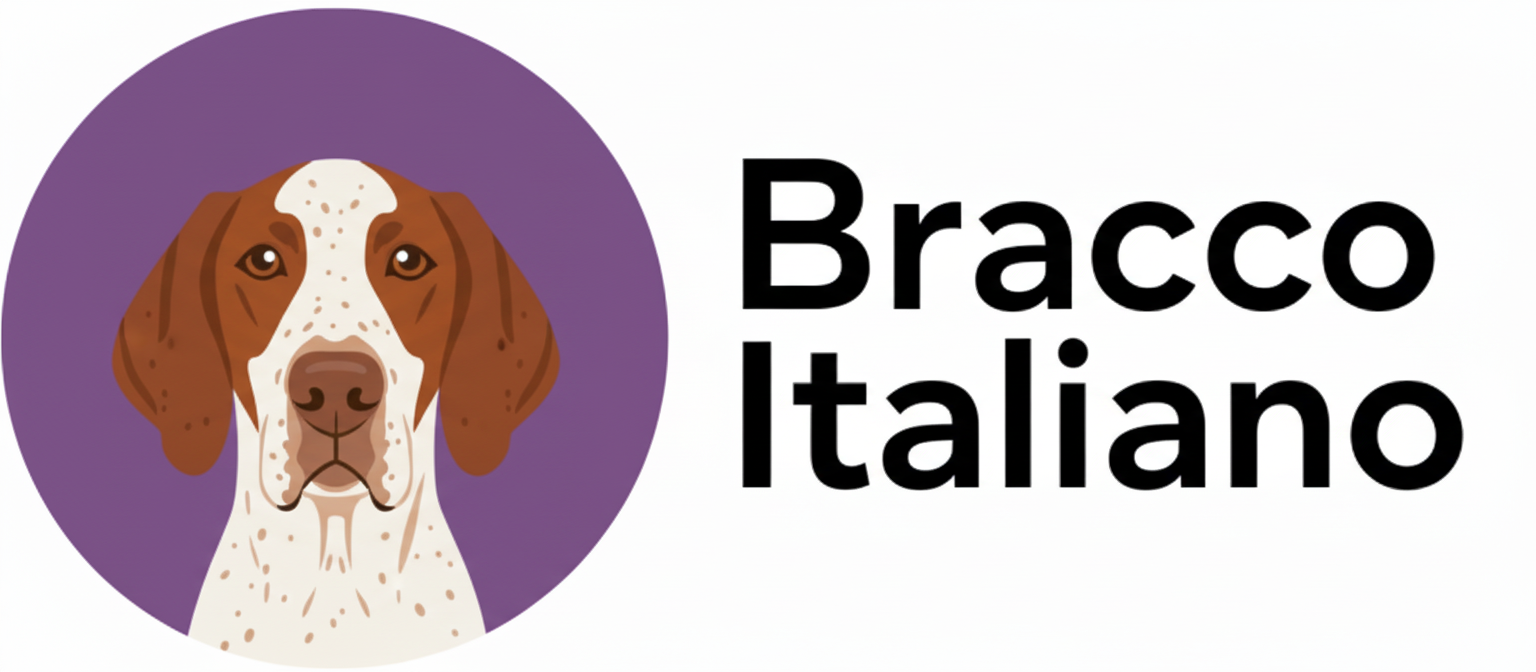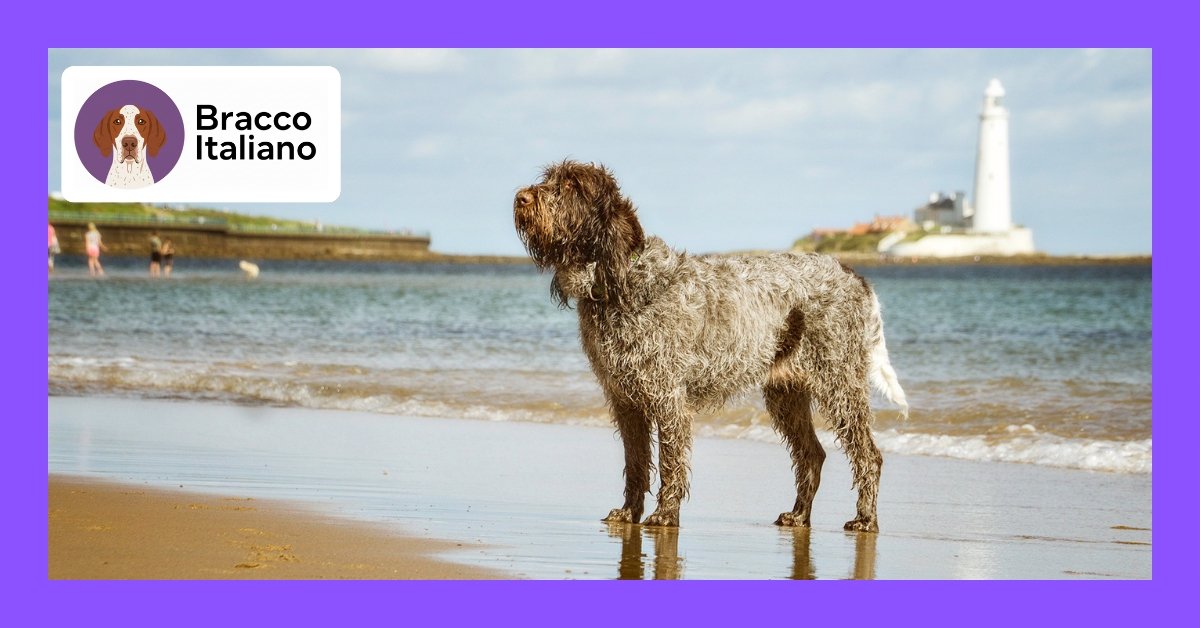Does your gentle Bracco Italiano suddenly sound like a guard dog? You’re not alone – this surprising behavior puzzles many owners of this typically friendly Italian breed.
Bracco Italianos growl primarily due to inadequate socialization, unmet exercise needs, anxiety, or underlying health issues. These intelligent hunting dogs require proper mental stimulation and early socialization to prevent defensive behaviors.
Understanding your Bracco’s growling is crucial for maintaining the loving relationship these dogs are known for. According to PetMD, proper training and socialization significantly reduce behavioral issues in this breed. Let’s explore the seven main reasons behind this behavior and how to address each one effectively.
Understanding Your Bracco Italiano’s Natural Temperament
Before diving into growling causes, it’s essential to understand what makes Bracco Italianos tick. These robust Italian pointers were bred for hunting, which shapes their personality and needs today.
Bracco Italianos are naturally intelligent, friendly, and inquisitive dogs. Their hunting background means they’re hardwired to be alert and responsive to their environment.
However, this alertness can sometimes manifest as growling when they feel uncertain or threatened. Their pendulous ears and expressive eyes might make them look gentle, but they’re still working dogs with strong instincts. While they aren’t typically considered guard dogs in the traditional sense, their protective instincts can surface through vocalizations like growling.
Key Breed Characteristics That Influence Behavior
- High intelligence: Quick to learn but also quick to develop bad habits without proper guidance
- Strong hunting instincts: Natural alertness that can trigger defensive responses
- Social nature: Thrive on interaction and can become anxious when isolated
- Moderate energy levels: Need consistent exercise but aren’t hyperactive
7 Primary Reasons Why Your Bracco Italiano is Growling
1. Inadequate Early Socialization
The most common cause of growling in Bracco Italianos stems from poor socialization during their critical development period. These dogs need exposure to various people, animals, and situations between 3-14 weeks of age.
Without proper socialization, your Bracco may view new experiences as threats. This leads to defensive growling when encountering unfamiliar situations, people, or other dogs.
Signs of socialization-related growling include tensing up around strangers, growling at other dogs during walks, or becoming defensive in new environments.
2. Unmet Exercise and Mental Stimulation Needs
Bracco Italianos require approximately 60-90 minutes of daily exercise plus mental challenges. When these needs aren’t met, frustration builds up and can manifest as growling. For detailed guidance on meeting these requirements, check out our comprehensive guide on Bracco Italiano exercise needs.
Frustrated dogs often growl during play, when interrupted from activities, or when they can’t access something they want. This type of growling usually accompanies restless behavior, excessive chewing, or attention-seeking.
Mental stimulation is equally important – puzzle toys, training sessions, and scent work help satisfy their intelligent minds.
3. Anxiety and Stress Responses
Bracco Italianos form strong bonds with their families and can develop separation anxiety. Anxious dogs often growl as a way to communicate discomfort or fear. This is particularly relevant for owners wondering about leaving their Bracco Italiano home alone.
Common anxiety triggers include loud noises, changes in routine, being left alone for extended periods, or overwhelming situations. Stress-related growling is often accompanied by panting, pacing, or destructive behavior.
These sensitive dogs pick up on household tension and may growl more frequently during stressful family periods.
4. Resource Guarding Behavior
Some Bracco Italianos develop resource guarding tendencies, especially around food, toys, or favorite resting spots. This behavior stems from an instinct to protect valuable resources.
Resource guarding growling typically occurs when someone approaches the dog while they’re eating, chewing a toy, or lying in their preferred spot. The growling serves as a warning to back away.
Early intervention is crucial, as resource guarding can escalate if not addressed properly.
5. Pain or Health Issues
Sudden onset growling in a previously calm Bracco Italiano often indicates pain or illness. Dogs can’t verbally communicate discomfort, so growling becomes their way of saying “something hurts.”
Common health issues that cause growling include hip dysplasia, ear infections, dental problems, or digestive issues. Pain-related growling often occurs when touching specific body areas or during movement.
If your dog’s growling started suddenly, schedule a veterinary examination to rule out medical causes.
6. Territorial Protective Instincts
Bracco Italianos naturally protect their territory and family members. While not typically aggressive guard dogs, they may growl to alert you of perceived threats.
Territorial growling usually happens at doorways, windows, or property boundaries when strangers approach. This behavior intensifies if the dog feels their family is threatened.
Some territorial behavior is normal, but excessive growling at every visitor or passerby needs addressing.
7. Communication During Play
Not all growling indicates problems – Bracco Italianos sometimes growl during enthusiastic play. Play growling sounds different from aggressive growling and occurs alongside relaxed body language.
Play growls are usually higher-pitched and accompanied by play bows, tail wagging, and bouncy movements. The dog’s overall demeanor remains friendly and inviting.
Learning to distinguish play growling from problematic growling helps you respond appropriately to your dog’s communication.
How to Address Bracco Italiano Growling: Step-by-Step Solutions
Step 1: Identify the Trigger
Keep a growling log for one week, noting when, where, and what triggers the behavior. Look for patterns in timing, location, or specific situations.
Record your dog’s body language, the duration of growling, and what stops the behavior. This information helps determine the underlying cause.
Common triggers include meal times, doorbell sounds, specific people, or certain handling. Identifying patterns is the first step toward effective solutions.
Step 2: Rule Out Medical Issues
Schedule a comprehensive veterinary examination if growling started suddenly or seems pain-related. Your vet should check for hip dysplasia, ear infections, dental problems, and other common Bracco Italiano health issues.
Be specific about when growling occurs and any physical symptoms you’ve noticed. Early detection of health problems prevents behavioral issues from worsening.
Some medical conditions in Bracco Italianos, like bloat or joint problems, can cause pain-related growling that mimics behavioral issues.
Step 3: Implement Positive Training Techniques
Bracco Italianos respond excellently to positive reinforcement training. Use treats, praise, and play rewards to encourage calm behavior and discourage growling.
Never punish growling, as this can suppress the warning signal without addressing the underlying issue. Instead, redirect the behavior and reward calm responses. A well-fitted training harness can provide better control during training sessions while ensuring your dog’s comfort.
Focus on building positive associations with triggers through counter-conditioning and desensitization training programs.
Step 4: Increase Exercise and Mental Stimulation
Ensure your Bracco gets adequate physical exercise through daily walks, runs, or play sessions. Mental stimulation through puzzle toys, training games, and scent work is equally important.
A tired Bracco is typically a well-behaved Bracco. Adjust exercise intensity based on your dog’s age, health, and individual needs.
Consider activities that tap into their hunting heritage, such as nose work or retrieving games.
Training Techniques That Work Best for Bracco Italianos
Successful training for this breed requires understanding their unique characteristics and motivations. Bracco Italianos are people-pleasers who respond well to consistent, positive methods.
| Training Method | Effectiveness for Braccos | Best Used For |
|---|---|---|
| Positive Reinforcement | Excellent | All behaviors, especially growling reduction |
| Clicker Training | Very Good | Precise behavior shaping |
| Force-Free Methods | Excellent | Building confidence and trust |
| Punishment-Based | Poor | Not recommended – can increase anxiety |
Socialization Strategies for Adult Dogs
If your adult Bracco missed early socialization, careful rehabilitation is still possible. Start with low-stress exposures and gradually increase difficulty as confidence builds.
Use high-value treats during positive exposures to new people, animals, or situations. Keep sessions short and always end on a positive note.
Consider working with a certified dog trainer who understands the breed’s specific needs and temperament.
When to Seek Professional Help
Some growling situations require professional intervention from certified dog trainers or veterinary behaviorists. Don’t wait if the behavior escalates or becomes frequent.
Seek help immediately if growling is accompanied by snapping, biting, or other aggressive behaviors. Resource guarding that involves food or high-value items also needs professional guidance.
A qualified trainer can assess your specific situation and create a customized behavior modification plan for your Bracco Italiano.
Red Flags That Require Immediate Attention
- Growling escalates to snapping or biting
- Resource guarding becomes more intense
- Multiple triggers cause defensive responses
- Growling started suddenly in an older dog
- Family members feel unsafe around the dog
Prevention: Setting Your Bracco Up for Success
Prevention is always easier than correction when it comes to behavioral issues. Start with proper socialization from puppyhood and maintain consistent training throughout your dog’s life.
Establish clear routines for feeding, exercise, and training. Bracco Italianos thrive on predictability and clear expectations.
Regular mental and physical stimulation prevents many behavioral problems from developing. These intelligent dogs need jobs to do and challenges to solve.
Creating a Positive Environment
Design your home environment to support good behavior. Provide comfortable resting areas, interactive toys, and safe spaces where your dog can retreat when overwhelmed. A quality orthopedic dog bed can serve as a designated calm space where your Bracco feels secure.
Avoid punishment-based training methods that can increase anxiety and defensive behaviors. Focus on building trust and positive associations with handling and new experiences.
Consistent family rules help your Bracco understand expectations and reduce confusion that can lead to stress-related growling.
Understanding why your Bracco Italiano is growling empowers you to address the root cause effectively. Whether it’s inadequate socialization, unmet exercise needs, or health issues, proper identification leads to successful solutions. Remember that growling is communication, not defiance – your intelligent Bracco is trying to tell you something important. With patience, positive training methods, and sometimes professional help, you can help your dog feel more secure and reduce problematic growling behaviors.
Frequently Asked Questions
Is it normal for Bracco Italianos to growl during play?
Yes, play growling is normal and different from aggressive growling. Play growls are higher-pitched and accompanied by relaxed body language, play bows, and tail wagging. The dog’s overall demeanor remains friendly and inviting during play sessions.
How can I tell if my Bracco’s growling is due to pain?
Pain-related growling often starts suddenly in previously calm dogs and occurs when touching specific body areas or during movement. Other signs include reluctance to move, changes in appetite, panting, or avoiding normal activities. Schedule a vet exam if you suspect pain.
Should I punish my Bracco Italiano for growling?
Never punish growling as it’s your dog’s way of communicating discomfort or warning before escalation. Punishment can suppress this important warning signal without addressing the underlying issue, potentially making the situation more dangerous. Use positive training methods instead.
How much exercise does a Bracco Italiano need to prevent behavioral issues?
Bracco Italianos need 60-90 minutes of daily exercise plus mental stimulation. This includes walks, play sessions, and activities that engage their hunting instincts like scent work or retrieving games. Adequate exercise significantly reduces frustration-related behaviors including growling.
Can older Bracco Italianos be socialized if they growl at strangers?
Yes, adult dogs can be resocialized with patience and proper techniques. Start with low-stress exposures at a distance, use high-value treats during positive encounters, and gradually decrease distance as confidence builds. Consider working with a professional trainer for best results.
What’s the difference between territorial and aggressive growling in Bracco Italianos?
Territorial growling occurs at boundaries (doors, windows, property lines) to alert about strangers but stops when the trigger leaves. Aggressive growling is more intense, may include other warning signs like raised hackles, and doesn’t easily de-escalate when the trigger is removed.
When should I contact a professional trainer about my Bracco’s growling?
Seek professional help if growling escalates to snapping or biting, occurs in multiple situations, started suddenly in an older dog, or if family members feel unsafe. Early intervention prevents behavioral issues from becoming more serious problems.

